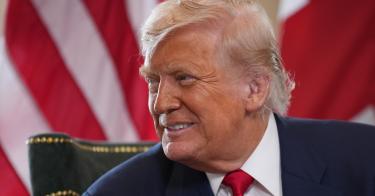The naysayers told us President Trump was going to deliver runaway inflation, but the latest data show exactly the opposite. Not only did inflation fall for consumers in the first half of the year, but it completely evaporated for businesses. And as Mr. Trump continues delivering on his energy agenda, there should be more relief coming for Americans.
That energy agenda is a key element in bringing inflation to heel because America is still dealing with the inflationary fallout from the misguided policies of the previous administration. If you reduce energy prices, however, then that puts downward pressure on prices everywhere, since energy is used in all products and services.
Mr. Trump sent a clear signal to energy producers, even before his inauguration, that he would end the Biden-era war on natural gas, oil, coal, and nuclear. Suppliers’ confidence rose, and they opened the taps, helping reduce energy prices. That, in turn, pushed down inflation.
In June, however, energy prices rose, partly because of geopolitical fears and disruptions. The consumer price index (CPI) increased 2.7 percent over the 12 months ending in June, versus a rate of 2.4 percent for May. The increase was much more muted for the core CPI (excludes the volatile food and energy categories), which rose from 2.8 percent to 2.9 percent.
>>> Powell Put the Fed and Taxpayers in the Red
Fortunately, energy prices have since come back down, including for consumer staples like gasoline. That will put downward pressure on countless other consumer prices in the months ahead.
Another indication of coming relief was seen in wholesale prices for June, which are essentially flat since January. During Mr. Trump’s first five months in office, cumulative wholesale inflation, as measured by the producer price index, was a mere 0.1 percent. That’s an annualized rate of just 0.2 percent, or one-tenth of the Federal Reserve’s 2.0 percent target.
These numbers stand in stark contrast to the inflationary mess left for Mr. Trump by the previous administration. The annualized wholesale inflation rate when Mr. Trump took office was a whopping 8.5 percent.
And lest any leftwing apologist try to say that this was simply one bad month of inflation data, recall that wholesale prices rose more than 22 percent during the previous administration. It was a long-standing problem.
There is also no evidence in these data that the costs of tariffs have so far been passed on by foreign producers at the wholesale price level. The “experts” have egg on their faces yet again.
While slamming the brakes on wholesale inflation is certainly a win for businesses, it’s also a win for consumers because changes at the wholesale level tend to precede those at the retail level. So, there’s reason to believe that consumer price inflation will slow further later this year.
The progress on inflation since Trump was inaugurated has been truly remarkable, considering the disaster left behind by four years of profligate spending, over-regulation, and mismanaged monetary policy. Those things didn’t disappear overnight, and many are still in place, which complicated the problem.
>>> Back From the Brink: Trump’s Economy Soars Instead of Crashing
For example, Mr. Trump inherited the largest-ever peacetime federal deficits, whether in absolute terms or as a percent of the economy, and it will take time to cajole Congress into reducing that spending. Until that spending is reduced, it will continue fueling inflation, offsetting the good work Mr. Trump is doing elsewhere.
To really crush inflation in the long run will require a whole-of-government approach because nearly every apparatus of government conspired to cause the problem in the first place. Congress spent too much, the executive branch overregulated, the Fed printed too much money, etc.
It all must be reversed if America wants to solve its current cost-of-living crisis. Mr. Trump’s energy agenda is a key ingredient in the mix. It’s already paying dividends, but much more can be done.
Consider that a manufacturer in this country faces an annual regulatory compliance cost of about $40,000 to $50,000 per worker. That’s a tremendous burden imposed by the government, which greatly increases the cost of employing Americans and doing business here, while also increasing the final cost to consumers.
If Mr. Trump can continue with energy and regulatory reform, cut spending, provide more tax relief, and fix the Fed, then this really will be a Golden Age for America.
This piece originally appeared in Townhall




